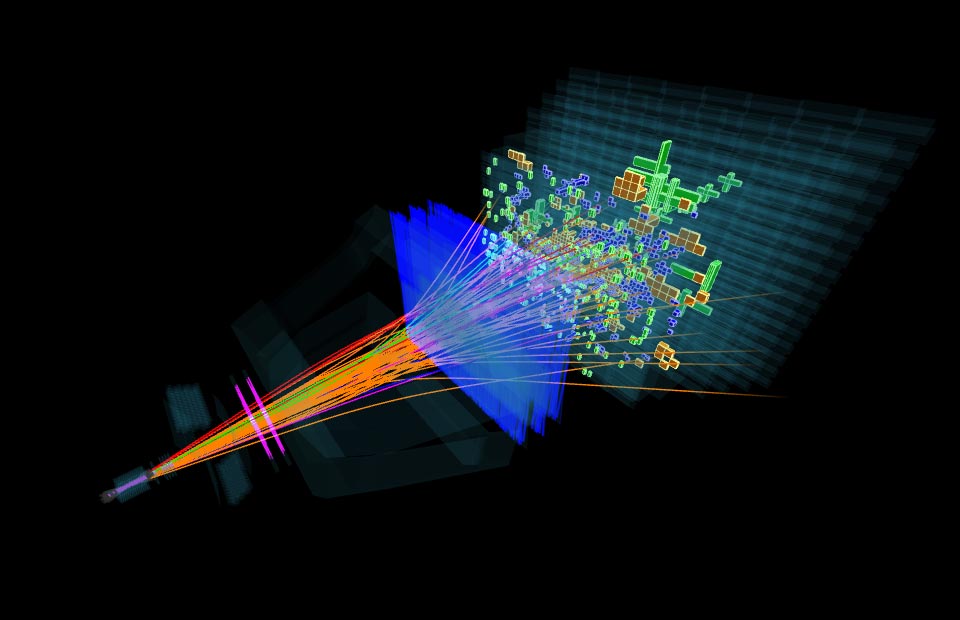
However, billions of beauty quarks are produced every year by CERN’s giant particle accelerator, the Large Hadron Collider, which are recorded by a purpose-built detector called LHCb.
The way beauty quarks decay can be influenced by the existence of undiscovered forces or particles.In March, a team of physicists at LHCb released results showing evidence that beauty quarks were decaying into particles called muons less often than to their lighter cousins, electrons.
This is impossible to explain in the Standard Model, which treats electrons and muons identically, apart from the fact that electrons are around 200 times lighter than muons.
As a result, beauty quarks ought to decay into muons and electrons at equal rates.
The difference between the LHCb result and the Standard Model was about three units of experimental error, or ‘3 sigma’ as it is known in particle physics.Assuming the result is correct, the most likely explanation is that a new force that pulls on electrons and muons with different strengths is interfering with how these beauty quarks decay.Today’s result examined two new beauty quark decays from the same family of decays as used in the March result?While the result isn’t conclusive on its own, it does add further support to a growing pile of evidence that there are new fundamental forces waiting to be discovered.
If a beauty quark only decays into either an electron or a muon, there is more mystery than just why more electrons that muons are createdHow can beauty quarks decay into particles that have a mass difference of 200 times if they are identical to begin with
And how in any Universe can you treat electrons and muons the same mathematically if “electrons are around 200 times lighter than muons”Any force that can act on both electrons and muons will certainly affect them differently but can’t cause some beauty quarks to decay into particles that are 200 times more massive than the decay product of another beauty quark no matter how much the force might interfere with the timing (or other aspects) of the decay of the beauty quarksBefore wondering why there is a difference in the number of muons versus the number of electrons created as decay products, it would be good to figure out how identical beauty quarks can decay into particles with such a giant mass difference